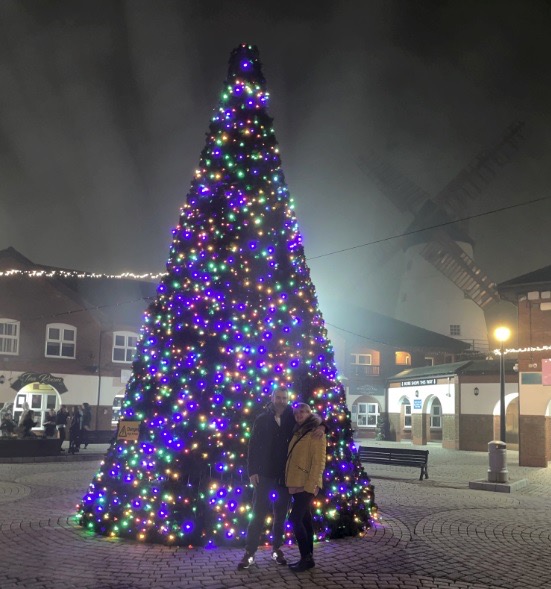Well Merry Christmas everybody and what a year it has been in these strange times as we all remain gripped in the midst of this pandemic, trying to make the best of things whilst staying as safe as we can.
One bit of a good news this month has been our driver for our jet hydroplane Longbow, David-John Gibbs transferring as a serving military pilot from the Navy to the RAF, providing a role of Flying Standards and Examining. This transfer between the Services now gives David-John the new rank within the RAF of Flight Lieutenant.
As an update to our good friend Dave Warby and his team in Australia they have booked to run their jet hydroplane Spirit Of Australia II for further development runs towards the end of January as it was getting too close to the Christmas holidays to try and squeeze it in prior to that with everyone’s associated seasonal family commitments.
Back with Longbow and as I mentioned in last month’s update, whilst I had managed to apply the first coat of red paint on the underside of the hull and it looked good in a long shot photo, it showed that I had an issue with airborne contamination settling upon the wet painted surface. This had been a comparatively negligible issue with the primer and undercoats of Perfection Pro paint as those had flashed off to touch dry relatively quickly. I knew there was dust in the workshop but had up until now taken the view that if I didn’t disturb it by applying the paint with a roller / brush rather than compressed air spray, it would not be an issue and indeed this had indeed been the case with the primer and undercoats.
However despite being warned by Jamie Smith of Marineware who had provided the paint that dust needed to be kept to a minimum with the colour coats of Perfection Pro I had not fully appreciated that they remain tacky for far longer than the primer and undercoats and hence the window of time for them to take on airborne dust if not addressed would prove to be a real headache with the finish as shown in the following photo.
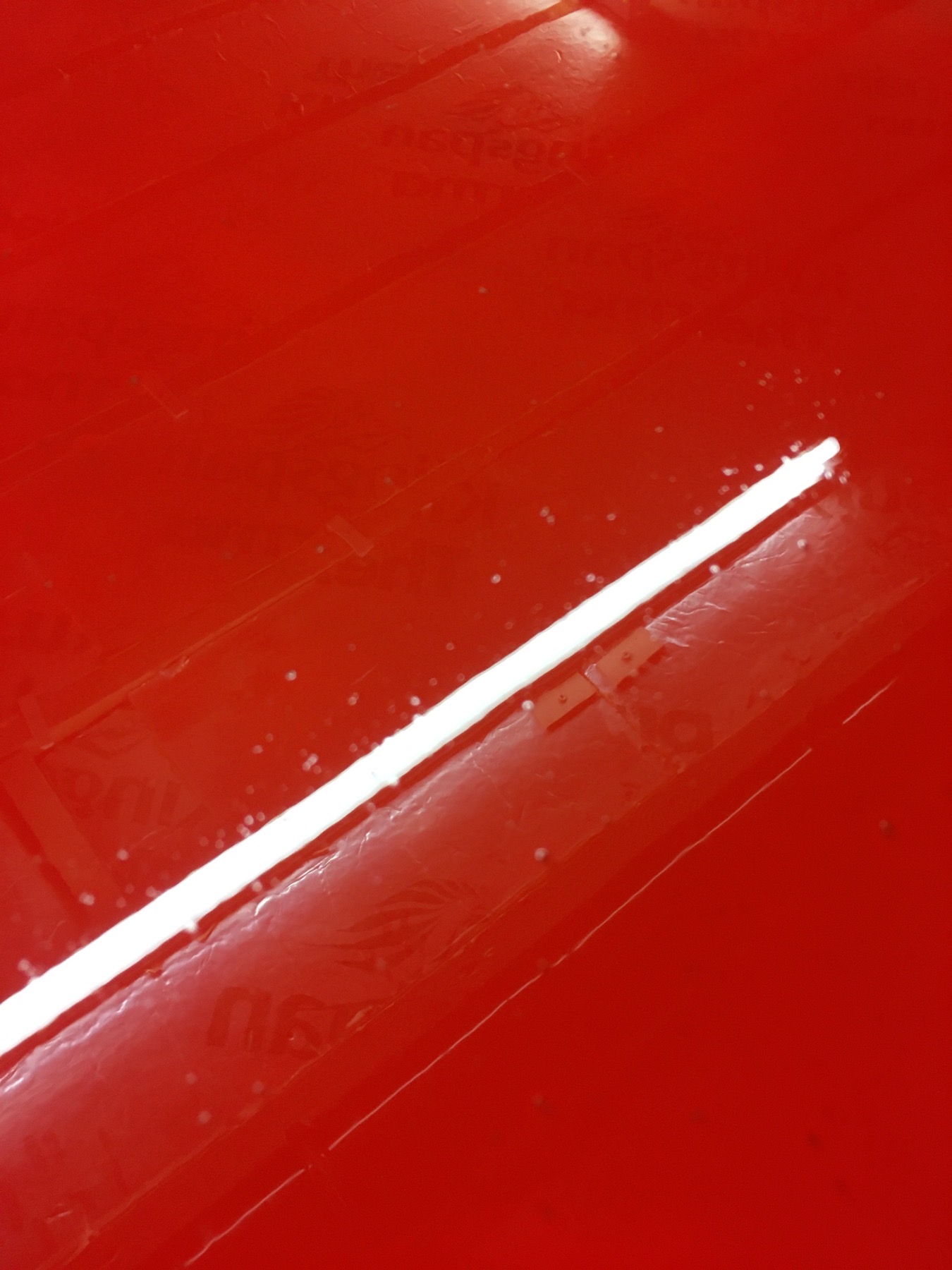
This was completely my own fault and only confirmed what I already knew that you cannot cut corners with preparation, you only end up making more work for yourself. Because this was only the first of three colour coats the situation was fortunately recoverable as you have to sand between coats in any case to provide sufficient key for the next coat of paint albeit it was a shame to see the lovely gloss finish be taken off with the process.
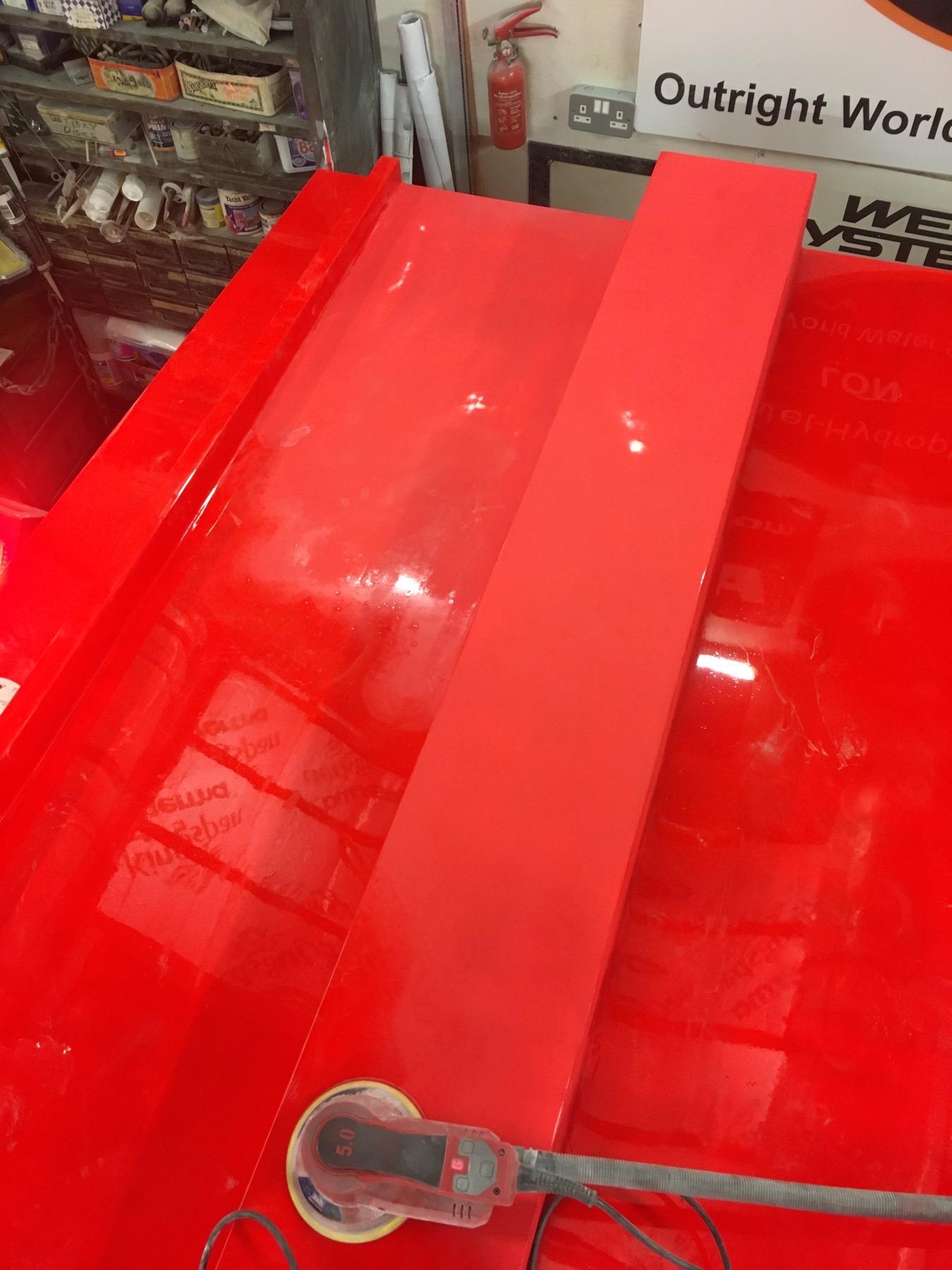
In an ideal world what you are meant to do is undertake all your sanding and preparation of the hull in one area and then take the hull into a clean room to paint it. Or at the least take the hull out of the workshop, clean the whole area down of build dust and then put the boat back in to paint. In good weather I have known folk paint a hull outside and tolerate any insects landing upon it whilst the paint remained tacky.
In our case however the hull was upside down on a steel grillage table with a mountain of stored items in a mezzanine floored two storey, pitched roof workshop in the midst of winter and I didn’t have the luxury of a separate clean room within which to take the hull to apply paint. A reality check showed that wherever I looked or touched in the workshop there was sanding dust everywhere and I was going to have to come up with a solution if there was to be any hope of doing justice to the superb gloss finish that our sponsor International Paints Perfection Pro system was capable of providing.
In the first instance it was a case of getting the ladders out to the top of the roof beams and start cleaning everything from there down as best I might and the T33A vacuum from our sponsor Trend proved to be a superb piece of kit in this respect. It took an age to do and as part of the task removing the dust covered wrapping off one of Longbow’s jet engines stored next to the hull provided a nice distraction to check the turbine over before sealing it up again.
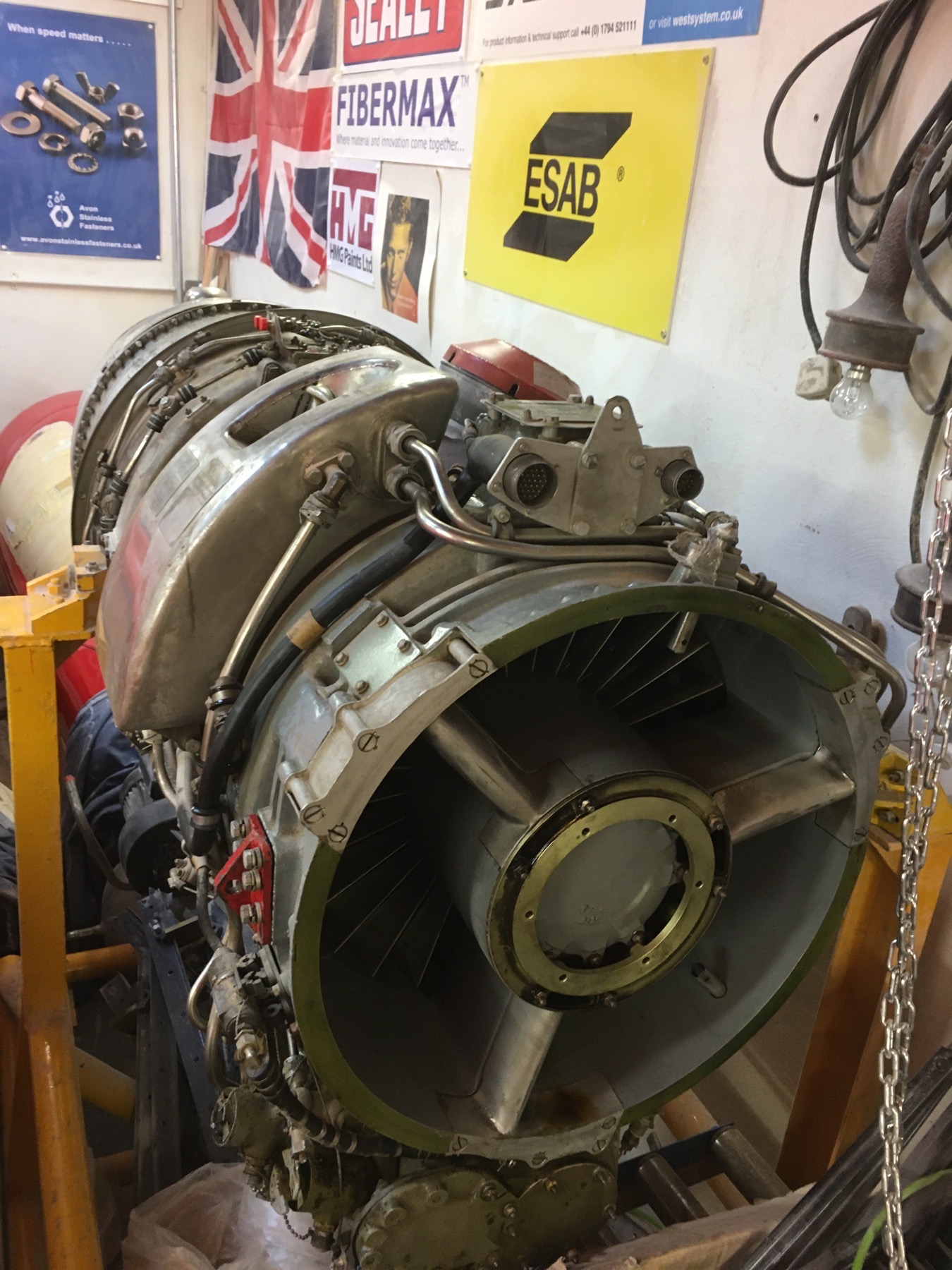
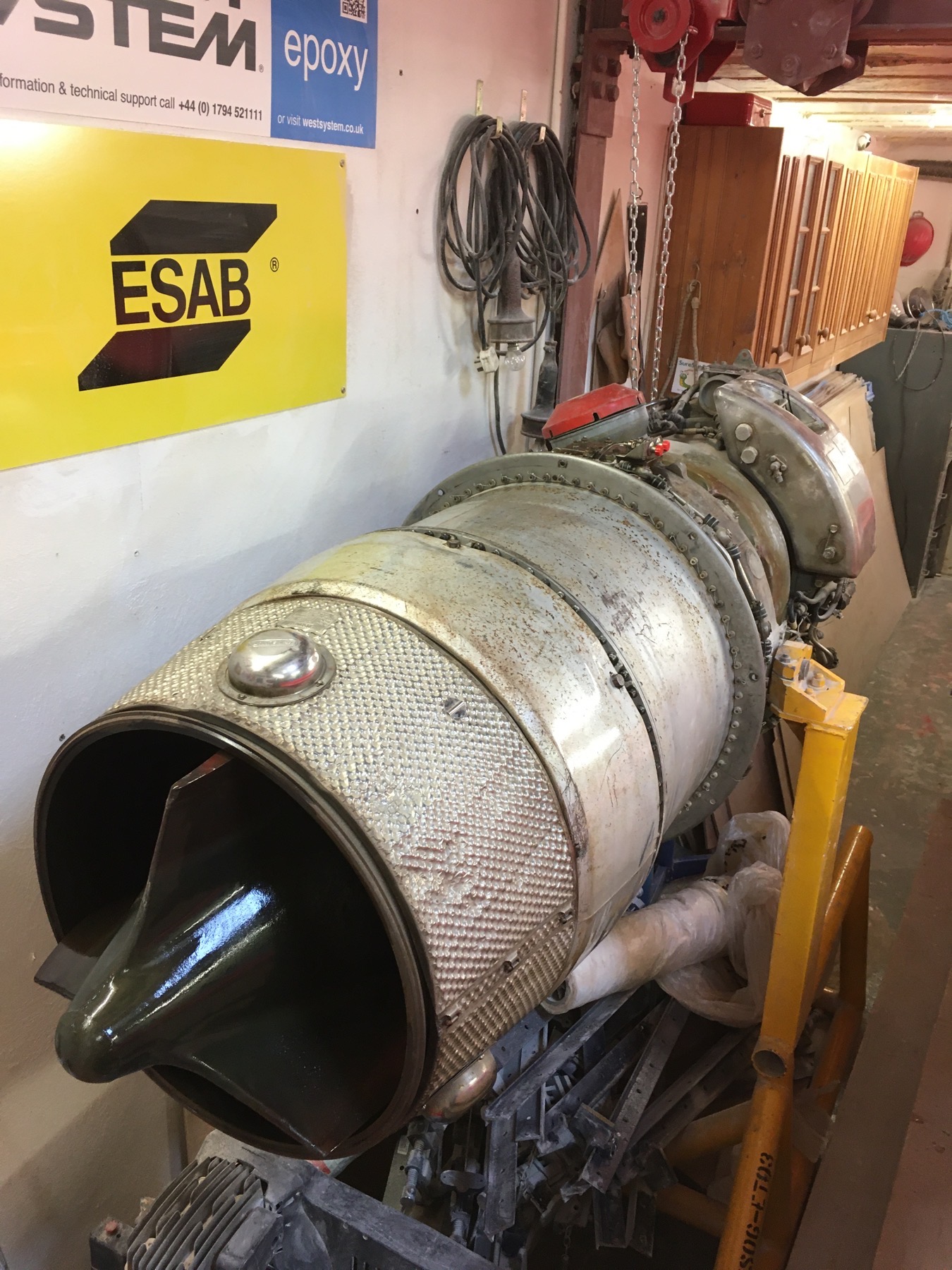
Whilst the workshop looked much better after the clean down even with the best will in the world I was never going to achieve a dust free environment with the hull and everything else still in there so whilst the situation was now much improved the next job was to build a tent inside the workshop over the full length of Longbow’s hull.
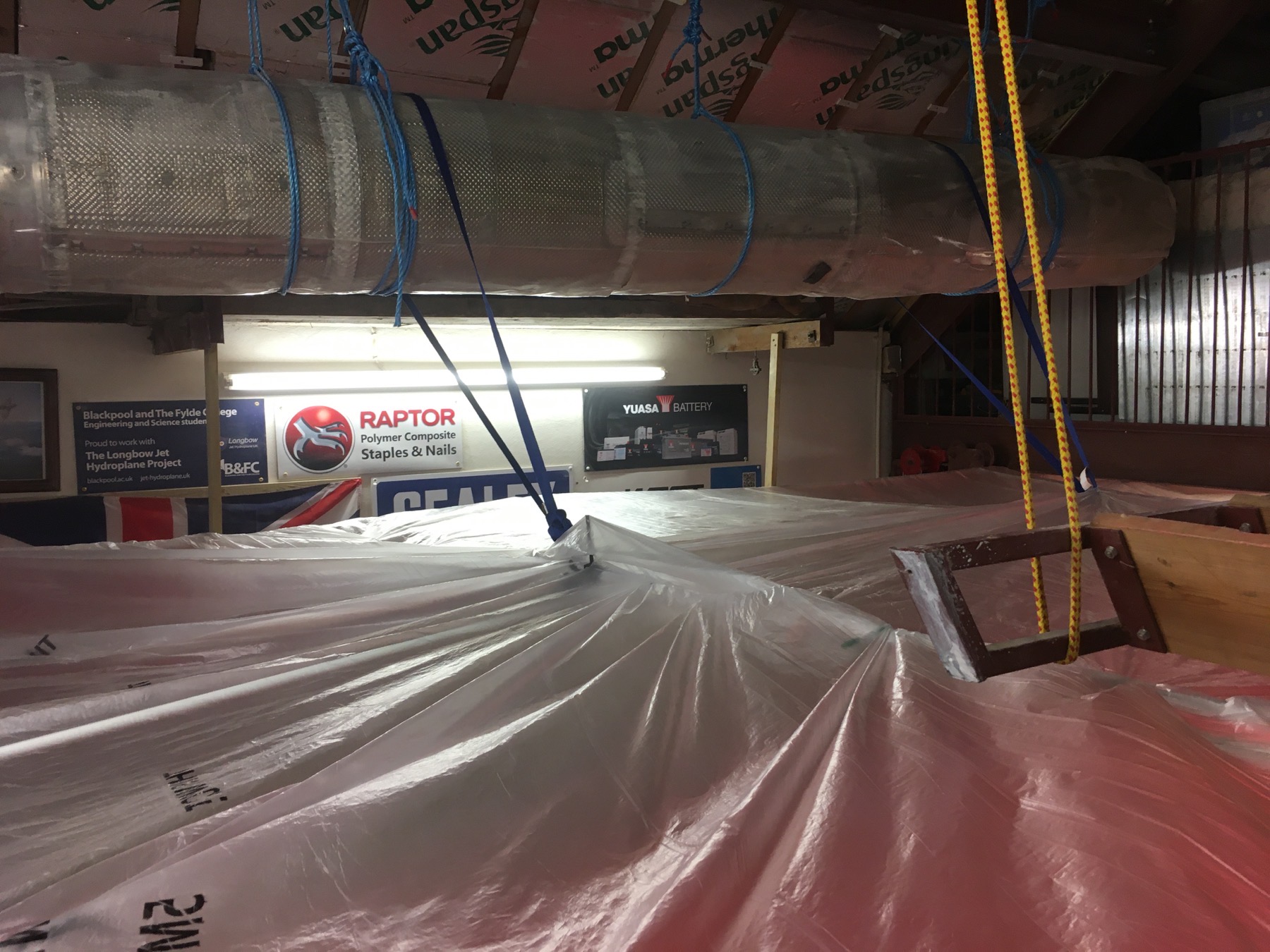
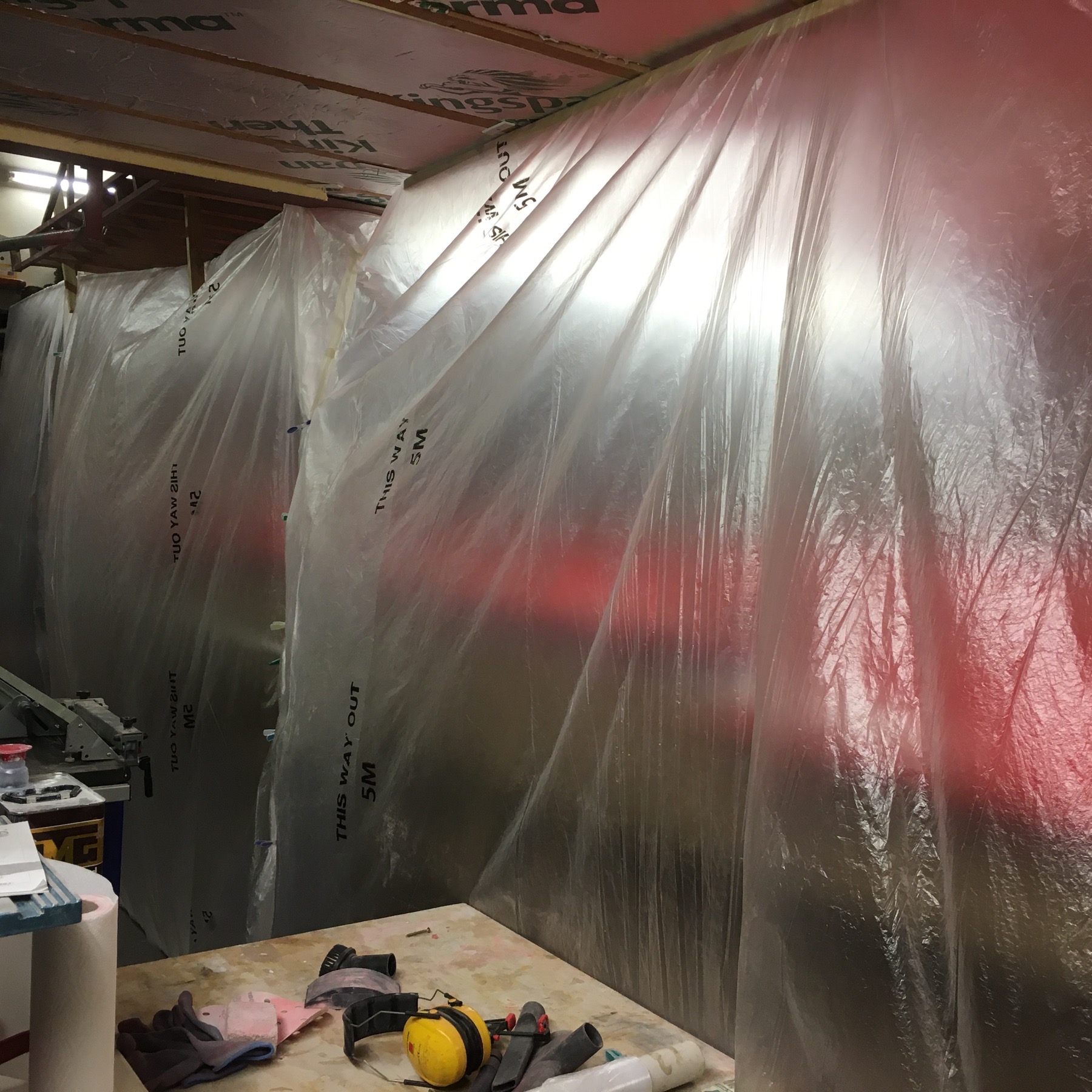
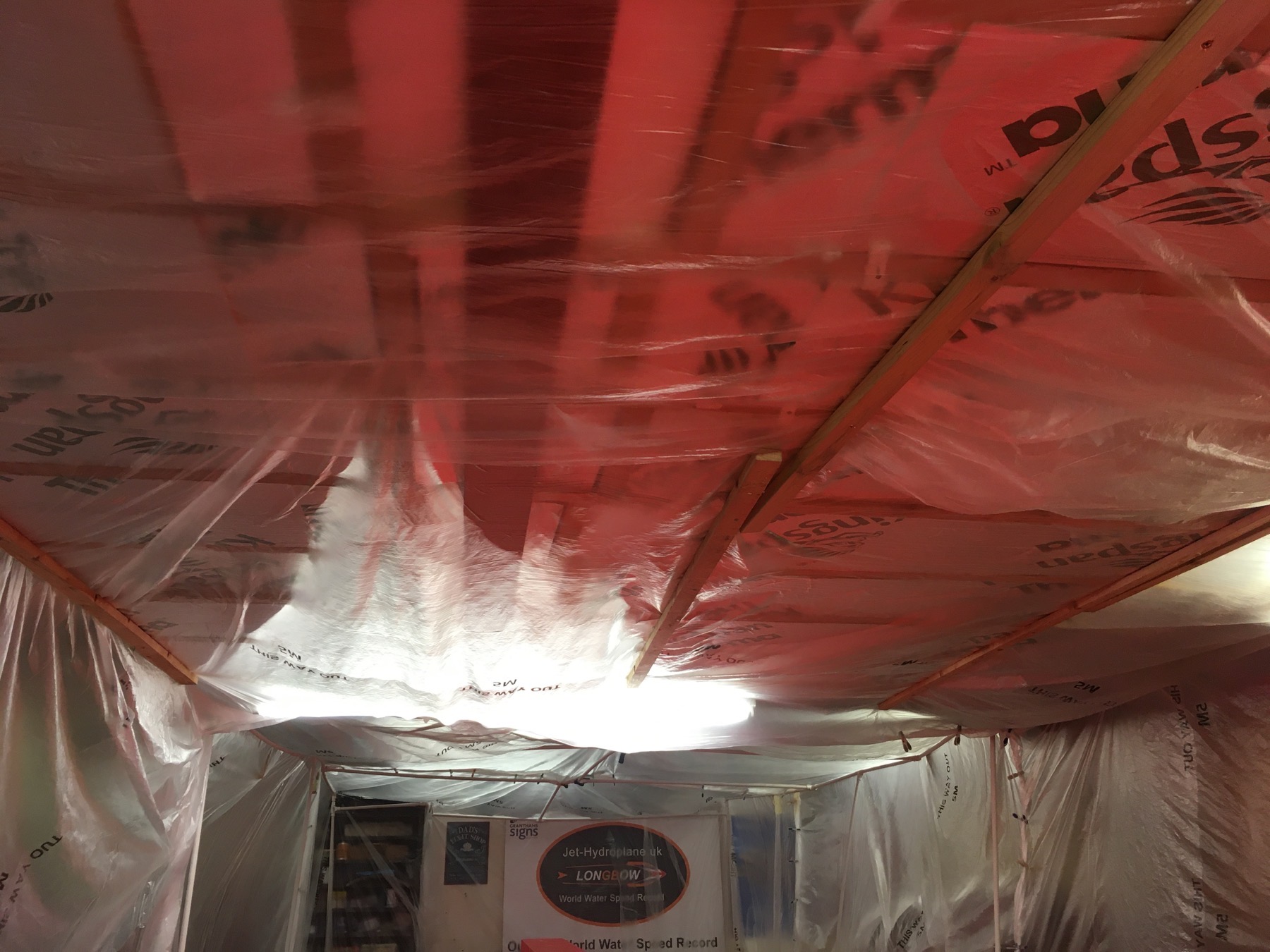
Apologies that this tent is something of a makeshift job slung down from the jet pipes and roof but it only has to do this one task then it can be disposed of, so the end will hopefully justify the means of building it in what you may appreciate was not the easiest of circumstances. The thing to do now is to do a sample area of another colour coat such as a sponson (as Jamie initially suggested) and see if there is hopefully an improvement in surface finish once dry before moving on to the main hull.
So with Longbow now all wrapped up it’s 2021 also wrapped up too and with that it only leaves me to wish you all a healthy happy and successful 2022 from all of us involved with this fun filled patriotic adventure.
